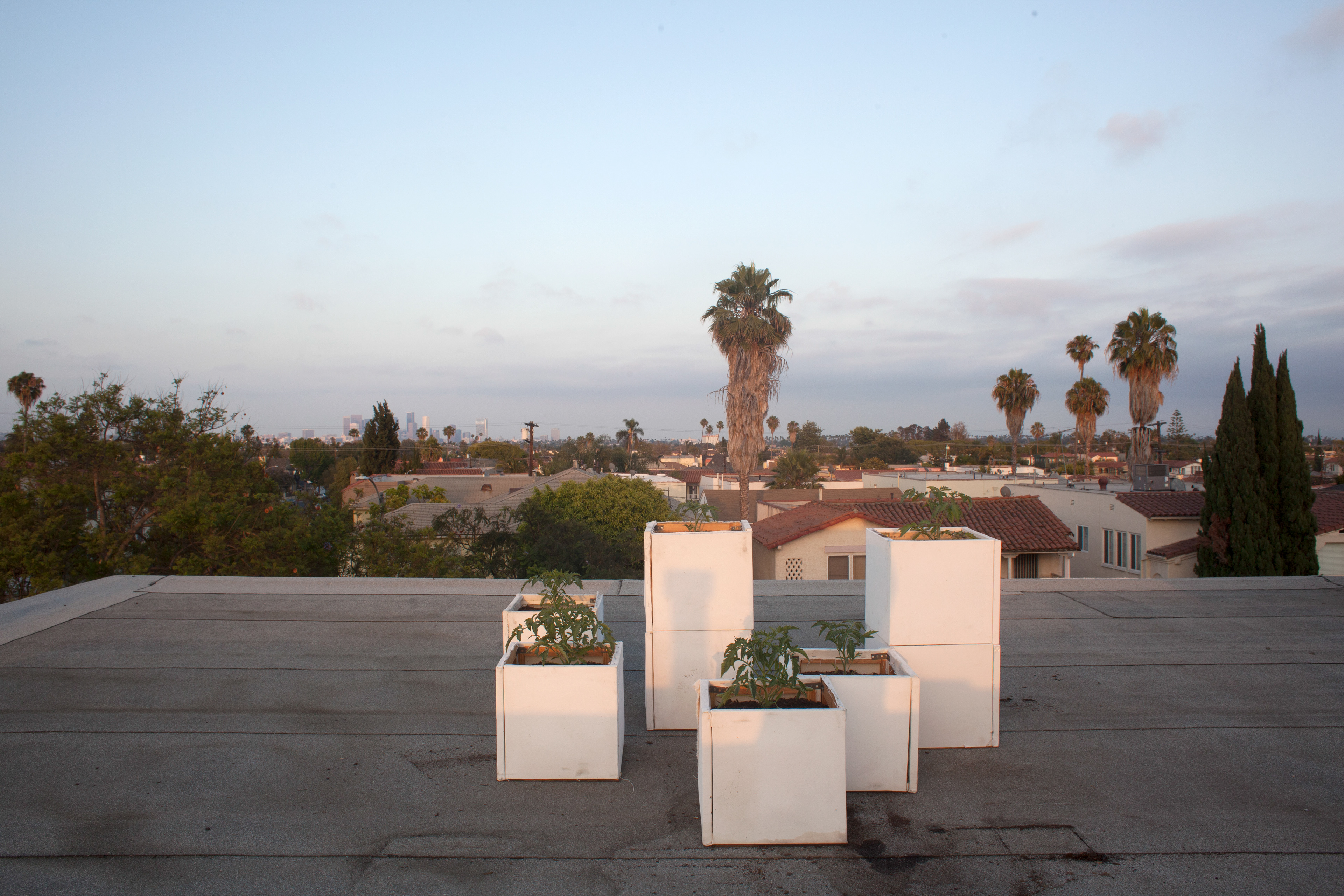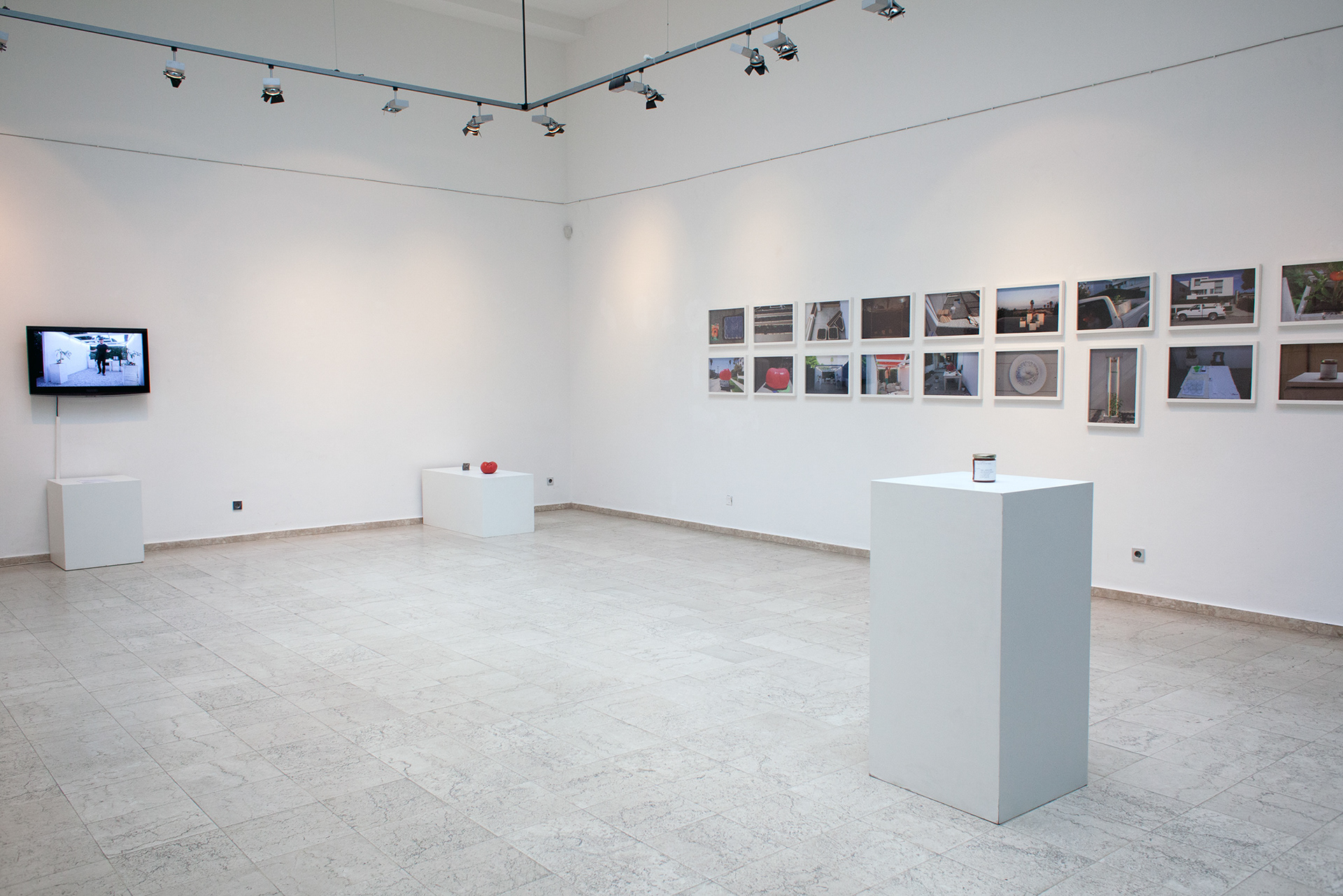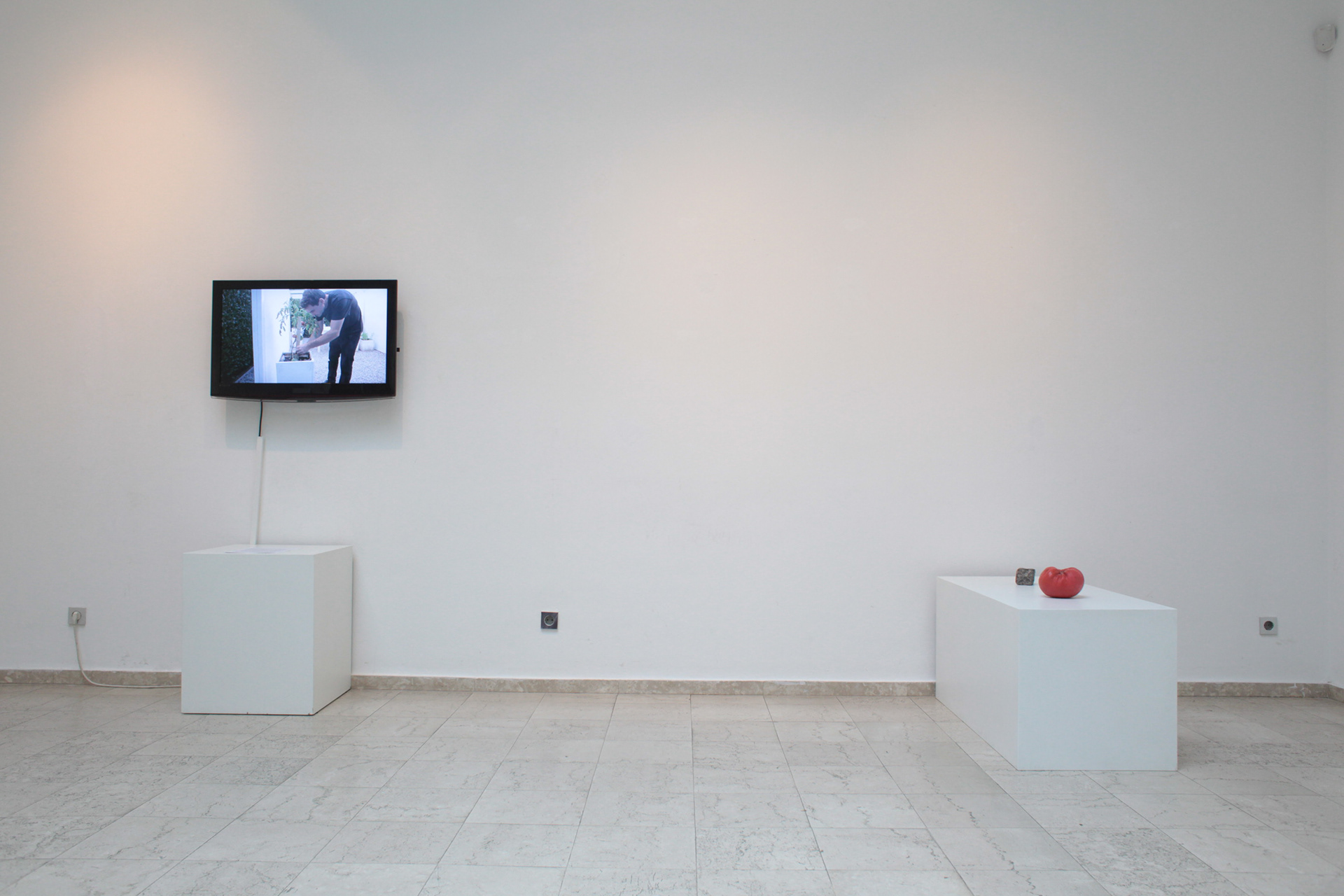video
digital video, 14:00 min, sketches, 23 color photographies, canvases, tomato soup in glass jars, inflatable vinyl tomato, song, artist book, 2012
Soup stopped being “just soup” in 1962, when Andy Warhol showcased for the first time his “portraits” of the Campbell’s tomato soup in the Ferus Gallery in Los Angeles. Today even in the grocer’s around the corner the legendary little box is much more Warhol’s than Campbell’s, as it holds, in preserved state, a
real revolution in our interaction with art.
Exactly 50 years later Kamen Stoyanov planted, in the yard of Schindler House in Los Angeles, the tomato seeds he had brought from Bulgaria. The artist spent his sixmonth residence in the U.S. farming in this popular monument of modern architecture aiming at producing a limited amount of tomato soup following his own recipe. Drawing on the concept of the ready-made, he transposed a tradition from his motherland – the household preparation of winter’s reserves – into an atypical context. He used the peculiar architectural setting, the legendary Hollywood charisma and its hidden social dramas to reposition a simple domestic gesture and, through it, his own cultural identity, which he transformed into an art statement.
Kamen Stoyanov started his work as homage to Warhol, but ultimately left no stone unturned in pursuing the idea of deconstructing the art object. What should he take back to Bulgaria? A can or a jar? He solved his conceptual dilemmas by taking back, together with the soup, his painterly “originals,” which originated in his farmer’s produce but in a purely “art” and, let’s say, intuitive way.
Kamen Stoyanov has delved into social layers that go beyond the problem of the uniqueness of the work of art and the product status that Warhol has won for it. Through the artist’s experiences and in the contrast between the environment and his actions, there is a direct reference to the life of the immigrant population in the Mecca of beautiful illusions and to migration in general. Stoyanov tried to enrich this contrast by sabotaging reality and performing his art in the popular cooking show format, where he reveals the
secret/recipe/his concept. He built his Farmville simulation not in a virtual but in a reallife yard ending up creating art out of soup and soup out of art.
Svetlana Kuymdjieva







